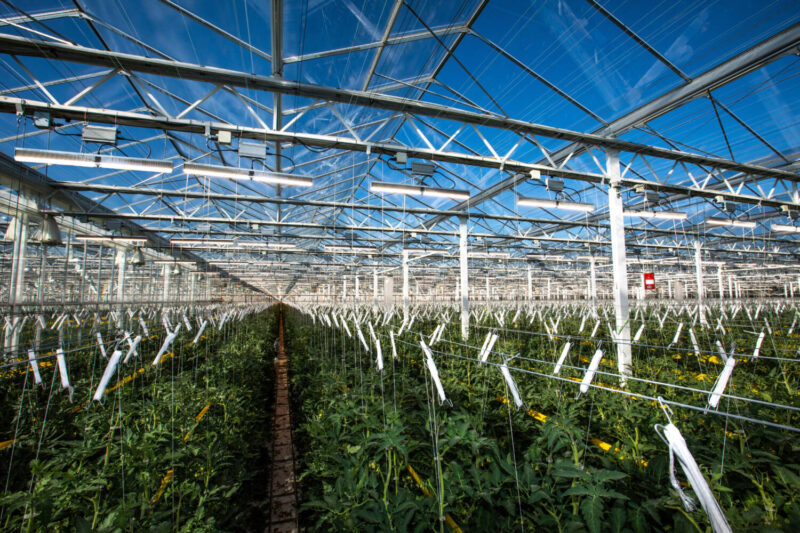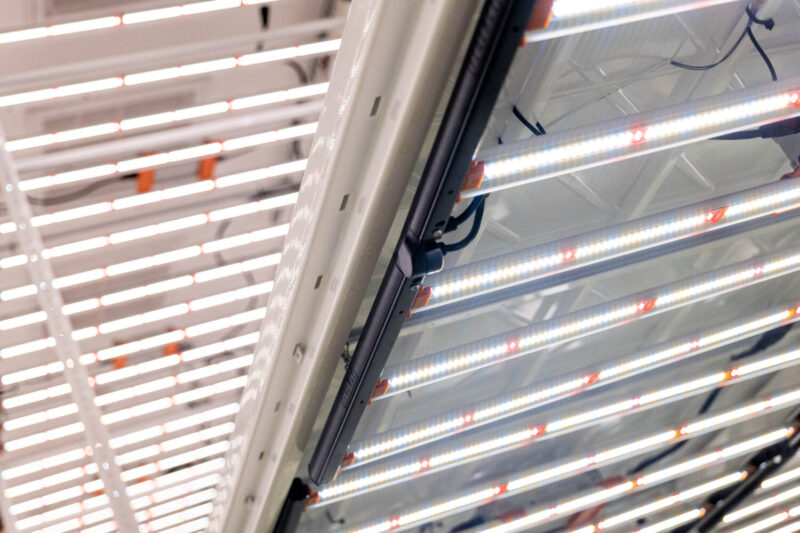
Transforming with automation in the greenhouse
What’s the latest in greenhouse lighting? There’s more to advance your production today than just switching over to LEDs. I had an enlightening chat with Ashley van de Sande, strategic account manager, and Michelle Montgomery, horticulture service specialist at Fluence, to uncover more insight into this evolving technology.
Let’s start with the latest technology in lighting systems for greenhouse operations. What are the things that growers should be looking out for and need to know right now?
Ashley van de Sande: Some of the things that we’re seeing now with LEDs becoming more of a standardization, and replacing what I like to call antiquated lighting, is the ability to increase fixture wattage. We’re seeing much more powerful fixtures coming to market. And now, we’re witnessing the benefit of higher power fixtures because it’s driving efficiency and light intensity.
Another benefit of LEDs is dimming controls — growers have the ability to adjust light intensity without ever compromising the lifespan of the fixture itself or the diode. I see that coming to market and many competitors adopting a higher powered fixture as growers are increasingly asking for higher light intensities.
Michelle Montgomery: Light quantity trumps light quality. We are focusing more on the ornamental growers, where the light quantity plays an important role in producing saleable crops. Today, we are offering more economically viable solutions for commercial LEDs, which wasn’t the case 10 years ago. One thing that the growers also need to understand is that there’s a play between efficacy and the spectrum. As more developments happen in the LED industry, it will become more important for growers to learn and create lighting strategies for particular crops.

How has the lifespan of fixtures improved in recent years?
Van de Sande: Now, we see a lot of utility companies providing prescriptive rebates for horticultural lighting and that wasn’t the case when horticultural LEDs first came to market.
Now with it being prescriptive rebates, they’re requiring a lot of lighting companies to meet these standards for qualified products based on Design Light Consortium requirements. One of those requirements is a specific lifespan on those lights.
I think because of the DLC merit, we are seeing more standardization within the quality of the lights themselves. Competitors are producing similar product offerings for some of the basics in minimum efficiency, minimum light intensity requirements and lifespan requirements, which is a positive thing to see as we start to create more standardizations across the board for LED lighting in the space.
How are lighting systems automated now, and what type of control do growers have over these systems?
Van de Sande: One benefit of LED dimming controls is integration with the grower’s climate control system. A part of the automation can be through PAR sensors that are installed throughout the greenhouse measuring natural light that is coming into the greenhouse and hitting the plant canopy, and as a result will adjust the supplemental light levels based on inputs that the grower will enter into their climate control system.

supplemental overhead lighting.
Discuss one of the big questions you commonly hear from clients or growers regarding lighting?
Montgomery: From my perspective, I always get the question: “What’s the right spectrum for my crop?”
Van de Sande: From a sales perspective, I often get questions around pricing because any smart grower will shop around and compare options between different lighting suppliers.
What I hope to see within this space is more standardization around comparing prices. Not all lighting solutions that we offer a grower are apples to apples between us and the competitor, and I would encourage growers to start looking at pricing from a cost per micromole perspective.
For example, we could be putting forward an option for a 600-watt lighting solution whereas the competitor or other lighting supplier is putting forward a proposal for a 1000 watt option. One fixture price is going to be higher and the other is going to be lower, but I would encourage the growers to look at the total project cost and look at the lighting layout to compare the cost per micromole instead of just the upfront fixture price.
What’s your top tip for growers to be successful with lighting or getting a new lighting system?
Van de Sande: I would also encourage them to understand the technology. What is the warranty, the efficiency and the light intensity that that technology is offering? Look at the company’s value outside of just the equipment itself like what services is the lighting supplier offering? The Fluence horticultural services team can help with lighting strategies, validation studies and with customer references.
Check out resources that the company offers like field application engineers. People that are boots on the ground to help with commissioning the lights, assisting with the light plans, rebate services through the utility and any kind of troubleshooting pre- and post-sales. I would also encourage growers to look at the technology as a whole to how the equipment is built because that’s really going to contribute to the overall lifespan.
Montgomery: You may be able to buy your lights somewhere else for less, but if you don’t have proper knowledge, there’s going to be a large learning curve. You need to know how to apply, what is the lighting strategy, what’s going to be your climate strategy — and that’s where we offer services to help growers effectively navigate the process much faster.
Growers should be using lighting companies that are providing them with a helping hand to learn this technology. On top of the cost and technology, the other driver for choosing a supplier is, I think, the services.









 Video Library
Video Library 


















